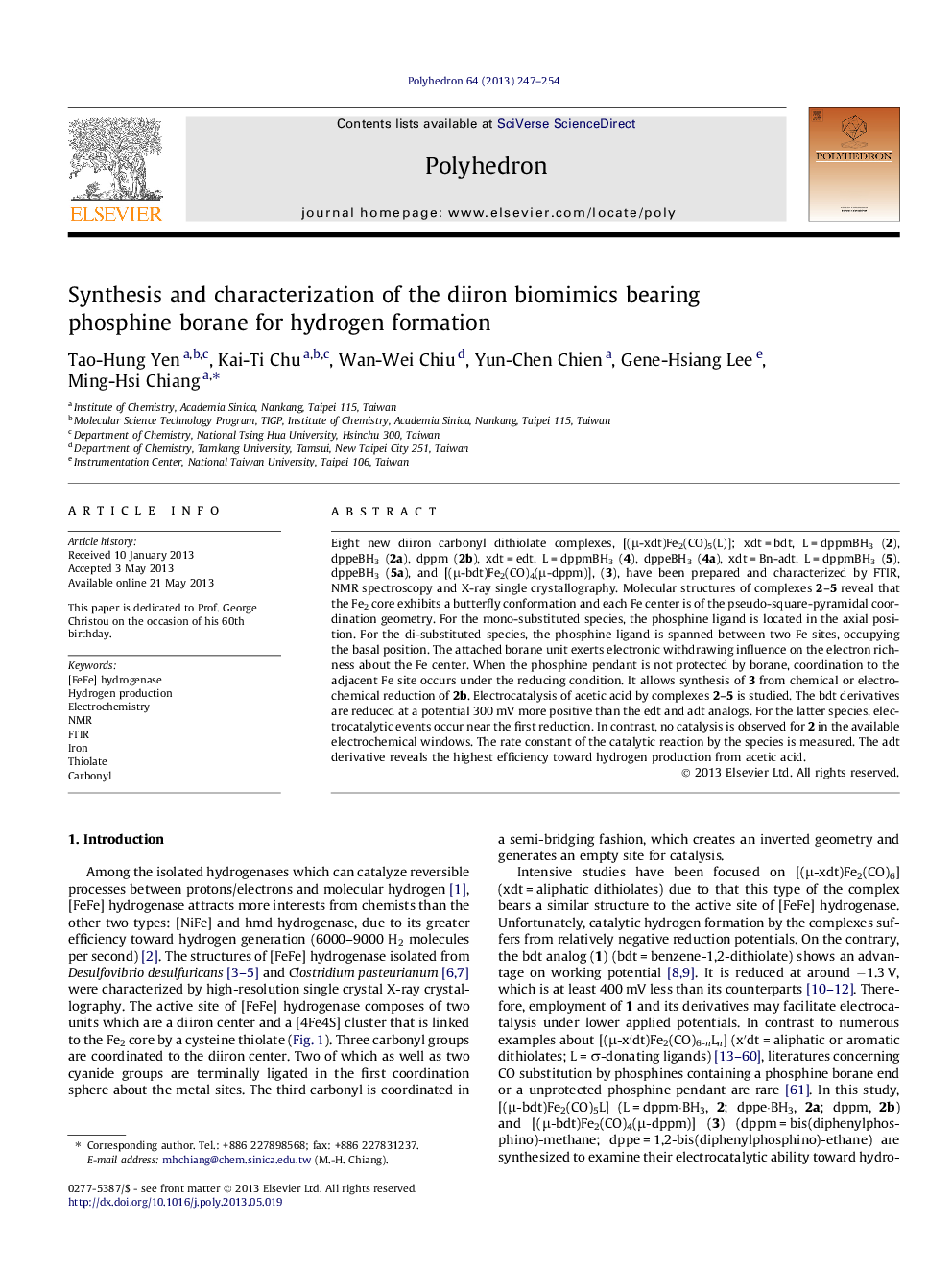| Article ID | Journal | Published Year | Pages | File Type |
|---|---|---|---|---|
| 1337047 | Polyhedron | 2013 | 8 Pages |
Eight new diiron carbonyl dithiolate complexes, [(μ-xdt)Fe2(CO)5(L)]; xdt = bdt, L = dppmBH3 (2), dppeBH3 (2a), dppm (2b), xdt = edt, L = dppmBH3 (4), dppeBH3 (4a), xdt = Bn-adt, L = dppmBH3 (5), dppeBH3 (5a), and [(μ-bdt)Fe2(CO)4(μ-dppm)], (3), have been prepared and characterized by FTIR, NMR spectroscopy and X-ray single crystallography. Molecular structures of complexes 2–5 reveal that the Fe2 core exhibits a butterfly conformation and each Fe center is of the pseudo-square-pyramidal coordination geometry. For the mono-substituted species, the phosphine ligand is located in the axial position. For the di-substituted species, the phosphine ligand is spanned between two Fe sites, occupying the basal position. The attached borane unit exerts electronic withdrawing influence on the electron richness about the Fe center. When the phosphine pendant is not protected by borane, coordination to the adjacent Fe site occurs under the reducing condition. It allows synthesis of 3 from chemical or electrochemical reduction of 2b. Electrocatalysis of acetic acid by complexes 2–5 is studied. The bdt derivatives are reduced at a potential 300 mV more positive than the edt and adt analogs. For the latter species, electrocatalytic events occur near the first reduction. In contrast, no catalysis is observed for 2 in the available electrochemical windows. The rate constant of the catalytic reaction by the species is measured. The adt derivative reveals the highest efficiency toward hydrogen production from acetic acid.
Graphical abstractA series of diiron dithiolate carbonyl complexes containing phosphine borane are synthesized and characterized by spectroscopic methods. Electrocatalysis toward hydrogen formation by the complexes in the acetic acid is examined.Figure optionsDownload full-size imageDownload as PowerPoint slide
